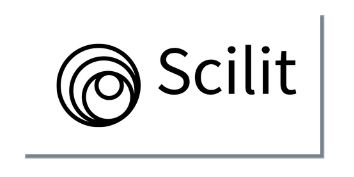The Effect of Exercise Training on Inflammatory Marker Levels in Pulmonary Hypertension Patients
DOI:
https://doi.org/10.11594/jk-risk.04.1.7Keywords:
Hipertensi Pulmonal, Latihan Fisik, Marker inflamasi, Kapasitas fungsionalAbstract
Pulmonary hypertension (PH) is characterized by pulmonary vascular dysfunction, which can lead to right heart failure and death, as well as the accumulation of inflammatory cells in the perivascular area. Chronic inflammation plays an important role in the pathophysiology of pulmonary hypertension. Inflammatory markers such as C-reactive protein (CRP), interleukin-6 (IL-6), and tumor necrosis factor-alpha (TNF-α) are often elevated in patients with pulmonary hypertension. The accumulation of inflammatory cells accelerates the remodeling process of pulmonary blood vessels and pulmonary hypertension. Despite the current therapeutic approaches for pulmonary hypertension (PH), which aim to improve functional capacity and hemodynamics, pulmonary hypertension remains incurable but remains controllable. Inflammatory processes play a critical role in progressive pulmonary hypertension. Physical exercise can reduce the risk of chronic disease, and recent research has shown that it improves inflammatory marker profiles. This literature review aims to combine evidence on the influence of physical exercise on levels of inflammatory markers in patients with pulmonary hypertension.
Downloads
References
Liu SF, Nambiar Veetil N, Li Q, Kucherenko MM, Knosalla C, Kuebler WM. Pulmonary hypertension: Linking inflammation and pulmonary arterial stiffening. Front Immunol. 2022;13(October):1–18.
Beavers KM, Brinkley TE, Nicklas BJ. Effect of exercise training on chronic inflammation. Clin Chim Acta. 2010;411(11–12):785–93.
Sche L, Latini A. Exercise-induced immune system response: Anti-inflammatory status on peripheral and central organs. Elsevier [Internet]. 2020;(January). Available from: https://doi.org/10.1016/j.bbadis.2020.165823
Richter MJ, Grimminger J, Krüger B, Ghofrani HA, Mooren FC, Gall H, et al. Effects of exercise training on pulmonary hemodynamics, functional capacity and inflammation in pulmonary hypertension. Pulm Circ. 2017;7(1):20–37.
Thenappan T, Ormiston ML, Ryan JJ, Archer SL. State of the Art Review: Pulmonary arterial hypertension: pathogenesis and clinical management. BMJ [Internet]. 2018 [cited 2024 Jun 24];360. Available from: /pmc/articles/PMC6889979/
Humbert M, Kovacs G, Hoeper MM, Badagliacca R, Berger RMF, Brida M, et al. 2022 ESC/ ERS Guidelines for the Diagnosis and Treatment of Pulmonary Hypertension Developed by the Task Force for the Diagnosis and Treatment of (ESC) and the European Respiratory Society (ERS). Eur Heart J. 2022;00:1–114.
Oldroyd SH, Manek G, Bhardwaj A. Pulmonary Hypertension. StatPearls [Internet]. 2024 May 1 [cited 2024 Jul 5]; Available from: https://www.ncbi.nlm.nih.gov/books/NBK482463/
Lan N, Massam B, Kulkarni S, Lang C. Pulmonary Arterial Hypertension: Pathophysiology and Treatment. Diseases. 2018;6(2):38.
Bousseau S, Sobrano Fais R, Gu S, Frump A, Lahm T. Pathophysiology and new advances in pulmonary hypertension. BMJ Med. 2023;2(1):e000137.
Zhao H, Song J, Li X, Xia Z, Wang Q, Fu J, et al. The role of immune cells and inflammation in pulmonary hypertension: mechanisms and implications. Front Immunol. 2024;15(March):1–9.
Rabinovitch M, Guignabert C, Humbert M, Nicolls MR. Inflammation and immunity in the pathogenesis of pulmonary arterial hypertension. Circ Res [Internet]. 2014 Jun 20 [cited 2024 Jul 5];115(1):165–75. Available from: https://www.ahajournals.org/doi/10.1161/CIRCRESAHA.113.301141
Pezzuto B, Badagliacca R, Poscia R, Ghio S, D’Alto M, Vitulo P, et al. Circulating biomarkers in pulmonary arterial hypertension: Update and future direction. J Hear Lung Transplant [Internet]. 2015;34(3):282–305. Available from: http://dx.doi.org/10.1016/j.healun.2014.12.005
Sproston NR, Ashworth JJ. Role of C-reactive protein at sites of inflammation and infection. Front Immunol. 2018;9(APR):1–11.
Santos-Gomes J, Gandra I, Adão R, Perros F, Brás-Silva C. An Overview of Circulating Pulmonary Arterial Hypertension Biomarkers. Front Cardiovasc Med. 2022;9(July):1–26.
Simonneau G, Torbicki A, Dorfmüller P, Kim N. The pathophysiology of chronic thromboembolic pulmonary hypertension. Eur Respir Rev [Internet]. 2017;26(143):1–14. Available from: http://dx.doi.org/10.1183/16000617.0112-2016
Chaix MA, Marcotte F, Dore A, Mongeon FP, Mondésert B, Mercier LA, et al. Risks and Benefits of Exercise Training in Adults With Congenital Heart Disease. Can J Cardiol [Internet]. 2016;32(4):459–66. Available from: http://dx.doi.org/10.1016/j.cjca.2015.12.007
Tran D, Maiorana A, Ayer J, Lubans DR, Davis GM, Celermajer DS, et al. Recommendations for exercise in adolescents and adults with congenital heart disease. Prog Cardiovasc Dis [Internet]. 2020;63(3):350–66. Available from: https://doi.org/10.1016/j.pcad.2020.03.002
Metsios GS, Moe RH, Kitas GD. Exercise and inflammation. Best Pract Res Clin Rheumatol. 2020;34(2).
El Assar M, Álvarez-Bustos A, Sosa P, Angulo J, Rodríguez-Mañas L. Effect of Physical Activity/Exercise on Oxidative Stress and Inflammation in Muscle and Vascular Aging. Int J Mol Sci. 2022;23(15).
Muttaqien F, Yulvina Y, Sari RN, Syarif F, Wahyudati S, Sofia SN, et al. Pengaruh Latihan Sirkuit Terhadap Biomarker Inflamasi,Kapasitas Fungsional, Fungsi Paru, dan Kualitas Hidup Pasien Gagal Jantung Kronik. Medica Hosp J Clin Med. 2019;6(1):48–53.
Fukuda K, Date H, Doi S, Fukumoto Y, Fukushima N, Hatano M, et al. Guidelines for the treatment of pulmonary hypertension (JCS 2017/JPCPHS 2017). Circ J. 2019;83(4):842–945.
Baião VM, Cunha VA, Duarte MP, Andrade FP, Ferreira AP, Nóbrega OT, et al. Effects of Exercise on Inflammatory Markers in Individuals with Chronic Kidney Disease: A Systematic Review and Meta-Analysis. Metabolites. 2023;13(7).
Downloads
Published
Issue
Section
License
Authors who publish with this journal agree to the following terms:
- Authors retain copyright and grant the journal the right of first publication with the work simultaneously licensed under a Creative Commons Attribution License that allows others to share the work with an acknowledgement of the work's authorship and initial publication in this journal.
- Authors can enter into separate, additional contractual arrangements for the non-exclusive distribution of the journal's published version of the work (e.g., post it to an institutional repository or publish it in a book), with an acknowledgement of its initial publication in this journal.
- Authors are permitted and encouraged to post their work online (e.g., in institutional repositories or on their website) before and during the submission process, as it can lead to productive exchanges and earlier and greater citation of published work (See The Effect of Open Access).

















